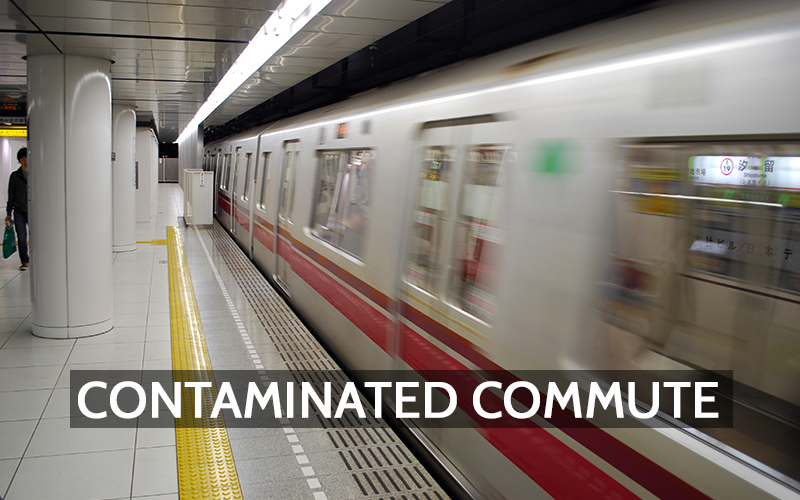Subway systems are integral to urban transportation in the United States, offering efficient and eco-friendly travel options. However, recent studies have highlighted concerns regarding air quality within these underground networks, particularly the elevated levels of fine particulate matter (PM2.5). Understanding the sources, health implications, and potential solutions for subway air pollution is crucial for safeguarding the health of millions of daily commuters.
Elevated PM2.5 Levels in Subway Systems
Research indicates that PM2.5 concentrations in several U.S. subway systems exceed established safety standards. A comprehensive study published in Environmental Health Perspectives assessed air quality across multiple northeastern subway systems, revealing that PM2.5 levels in underground stations were significantly higher than outdoor ambient air. For instance, the study reported mean PM2.5 concentrations of 779 µg/m³ for the PATH line connecting New York City to New Jersey and 547 µg/m³ for New York’s MTA, far surpassing the Environmental Protection Agency’s (EPA) 24-hour standard of 35 µg/m³.
Sources of Subway Air Pollution
The primary contributors to elevated PM2.5 levels in subways include:
-
Metallic Particles: Wear and tear from train components such as wheels, brakes, and tracks generate fine metal particles, predominantly iron.
-
Diesel Emissions: Diesel-powered maintenance equipment and trains emit exhaust that contributes to particulate pollution, especially in enclosed or poorly ventilated stations.
-
Limited Ventilation: Many subway stations, particularly older ones, suffer from inadequate ventilation systems, leading to the accumulation of pollutants.
A study focusing on New York City’s subway system found that stations with older infrastructure and poor ventilation had higher concentrations of PM2.5, exacerbating exposure risks for commuters.
Health Implications for Commuters
Exposure to elevated PM2.5 levels poses significant health risks. These fine particles can penetrate deep into the respiratory system, leading to cardiovascular and respiratory diseases, including asthma, bronchitis, and increased risk of heart attacks. A study highlighted that commuters in New York City are exposed to PM2.5 levels that are nearly 10 times the World Health Organization’s recommended limits, underscoring the potential health hazards associated with regular subway use.
Disproportionate Impact on Vulnerable Populations
The burden of subway air pollution does not affect all commuters equally. Research indicates that minority and low-income communities, who often rely more heavily on public transportation and have longer commute times, experience higher exposure levels. In New York City, Black and Hispanic commuters face PM2.5 exposure levels that are 35% and 23% higher, respectively, than their white and Asian counterparts.
Strategies for Mitigation
Addressing subway air quality requires a multifaceted approach:
-
Enhancing Ventilation: Upgrading station ventilation systems can help disperse accumulated pollutants, reducing commuter exposure.
-
Modernizing Equipment: Transitioning to electric-powered maintenance machinery and trains can significantly cut down diesel emissions.
-
Regular Maintenance: Implementing routine cleaning protocols for stations and tracks can minimize the buildup of particulate matter.
-
Real-Time Monitoring: Installing air quality monitoring systems in stations can provide data to inform targeted interventions and keep the public informed.
For example, the Massachusetts Bay Transportation Authority (MBTA) secured federal funding to improve ventilation at Boston’s Back Bay station, aiming to address longstanding air quality issues exacerbated by diesel fumes.
While subways remain a cornerstone of urban mobility, the pressing issue of air quality within these systems demands immediate attention. By understanding the sources and health impacts of subway air pollution, and by implementing targeted mitigation strategies, we can work towards ensuring that public transit remains both a convenient and healthy choice for all commuters.
Related Article:
Houseplants and Indoor Air Quality: The Reality Behind the Green
References:
- https://en.wikipedia.org/wiki/Back_Bay_station
- https://www.theguardian.com/us-news/article/2024/aug/07/new-york-city-subway-hazardous-air
- https://www.architecturaldigest.com/story/nyc-subway-riders-ingest-exceptionally-high-amounts-of-air-pollution-every-day
- https://engineering.nyu.edu/news/subway-air-pollution-disproportionately-impacts-new-york-citys-minority-and-low-income
- https://ehp.niehs.nih.gov/doi/full/10.1289/EHP7202


